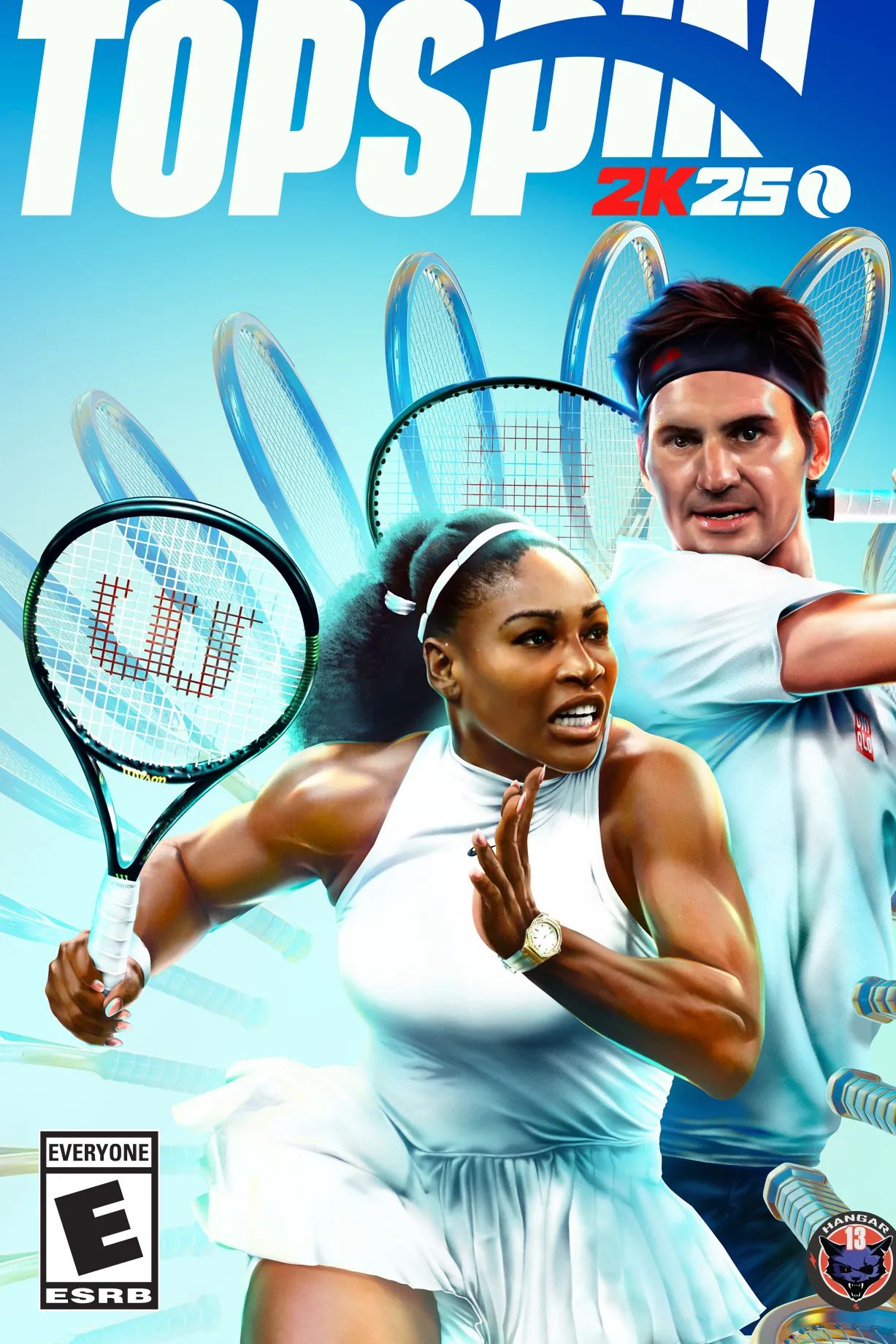


Top Spin was perhaps the major tennis video game franchise for the entirety of its initial run of releases. Starting with the original Top Spin in 2003, which was a great game for the original Xbox before being ported to PC and PS2, the series straddled that line between simulation and fair-weather gameplay and found a home with plenty of tennis fans. The series is now returning with TopSpin 2K25, From Hangar 13 and 2K Games, and aims to scratch a tennis game itch that has been missing for some time.
TopSpin 2K25 looks to provide tennis fans with an authentic alternative to the real thing in video game form. Including top pros such as Roger Federer and Serena Williams, as well as all of the Grand Slam tournaments and more, it delivers gameplay across multiplayer modes, exhibition matches, and a comprehensive career mode. However, its return to the modern day of gaming has come with some of the negatives of the contemporary era of sports titles, to the detriment of a player’s overall enjoyment.
TopSpin 2K25 is a solid return for a long-absent tennis franchise.
The original Top Spin and its sequels did a very good job of creating that “easy to learn, difficult to master” mantra, and TopSpin 2K25 has a similar setup. The game builds a good complexity from the start without impeding the player from winning at their own pace, choosing not just a type of shot but also power range through holding down the button, and needing to release at the right time to pull off a perfect or good shot. It gives the player a good level of autonomy, and ensures there’s a tactical element that is vital to keeping each match interesting.
This tactical structure is very well designed, delivering one of the key facets that has kept tennis games exciting to play going all the way back to Pong. Players need to be able to tap into that fluidity of strategic play, to manipulate their opponent into moving around the court to strike the winning shot, and TopSpin 2K25 provides this. It’s not perfect, with movement feeling a little bit awkward and sometimes AI feel a little bit on the slow side, but nonetheless it’s a suitable facsimile of real world tennis.
Players should spend a bit of time in the tutorial, providing they have the patience to handle the odd glitch here and there, and then take some time over exhibition matches to gauge both their understanding of how the game works and what difficulty setting to choose tor the best level of challenge.
There are a few other minor issues to bear in mind. Those expecting a completely revolutionary approach to video game tennis won’t find something radical here – if you remember the original Top Spin games, this isn’t extremely different in spite of the 13 year gap and another change of developer, so it’s more evolution than revolution. A handful of glitches here and there can also break the player out of their immersion, especially when things stop working correctly in tutorial and training events.
Those who take part in the single player element of TopSpin 2K25 will likely spend most of their time in the game’s career mode, MyCareer. This is where the player will move their way up the rankings, from minor tournaments to the likes of Wimbledon, with the goal of becoming number one in the world and claiming all four Grand Slams. There are plenty of game hours to be spent here, although for some players it may feel a little surface level, and not at the level of depth of some other titles such as the F1 games or EA Sports FC.
Career mode gameplay sections are split into three areas: the relatively dull training sessions which task the player with a number of perfect shots or hitting targets in a certain order; special events where the player can unlock new clothing, arenas, and home locations for their created character; and tournaments, which themselves slowly grow in complexity. It’s a solid enough structure, although the tournaments are by far the most enjoyable part of the setup, as although the special events have their moments the goals can sometimes feel a little arbitrary.
The natural progression of how the game should feel is being curtailed by sticking to the traditional contemporary model of how these games should ‘be.’
There are, again, some limitations here. Some elements of the overall structure add little to the overall quality, such as including stamina and injuries that do little but slow the player down (rather than in EA Sports FC, where it then requires the player to rethink their team lineup or training regime). Such risks can be mitigated with a good home and trainer setup in the game, along with taking part in the quite slow level-up system, and made a little more exasperating by the way that the game’s in-game currency can help with either XP boosts or allowing the player to buy home bases, the gameification of the structure breaking immersion.
This is where TopSpin 2K25 really starts to lose its way, as its in-game monetization model starts to impact on the overall quality of the rest of the experience. TopSpin 2K25 may not be the most heinous example of microtransaction implementation, but the bones of what has plagued the rest of the sports video game landscape is here. And of course, it’s always worth remembering how this impacts on the traditional gameplay loop of the player’s experience as a whole.
As one such example, the player can buy things to advance their MyCareer progress using the title’s in-game currency. This could be a new home they’ve unlocked through a special event, which could mean they face less travel time and less ‘fatigue’ between tournaments, or buying ‘boosts’ to their XP to speed up the sluggish levelling up system. It essentially means that the natural progression of how the game should feel is being curtailed by sticking to the traditional contemporary model of how these games should ‘be’, and how a well-paced experience can be dependent on spending additional money.
TopSpin 2K25 has the core elements of a good tennis game, and its actual moment-to-moment gameplay has sufficient improvements over anything else on the market to keep tennis fans happy, especially the complexity of options for players with every swing of the racket. Structurally, the game has a few hiccups, with a fluctuation when it comes to just how enjoyable certain parts of the career mode are combined with awkward pacing that seems deliberately structured with potential in-game transactions in mind, although there’s still plenty there to enjoy.
What players get out of TopSpin 2K25 will depend both on their love of tennis as a sport and their tolerance for the presence of sports game-style microtransactions. The core here is certainly solid, however, and with so few tennis games competing in the market right now, it’s good to see a reappearance from one of the genre’s past greats.
Screen Rant was provided with a PS5 download for the purposes of this review.
